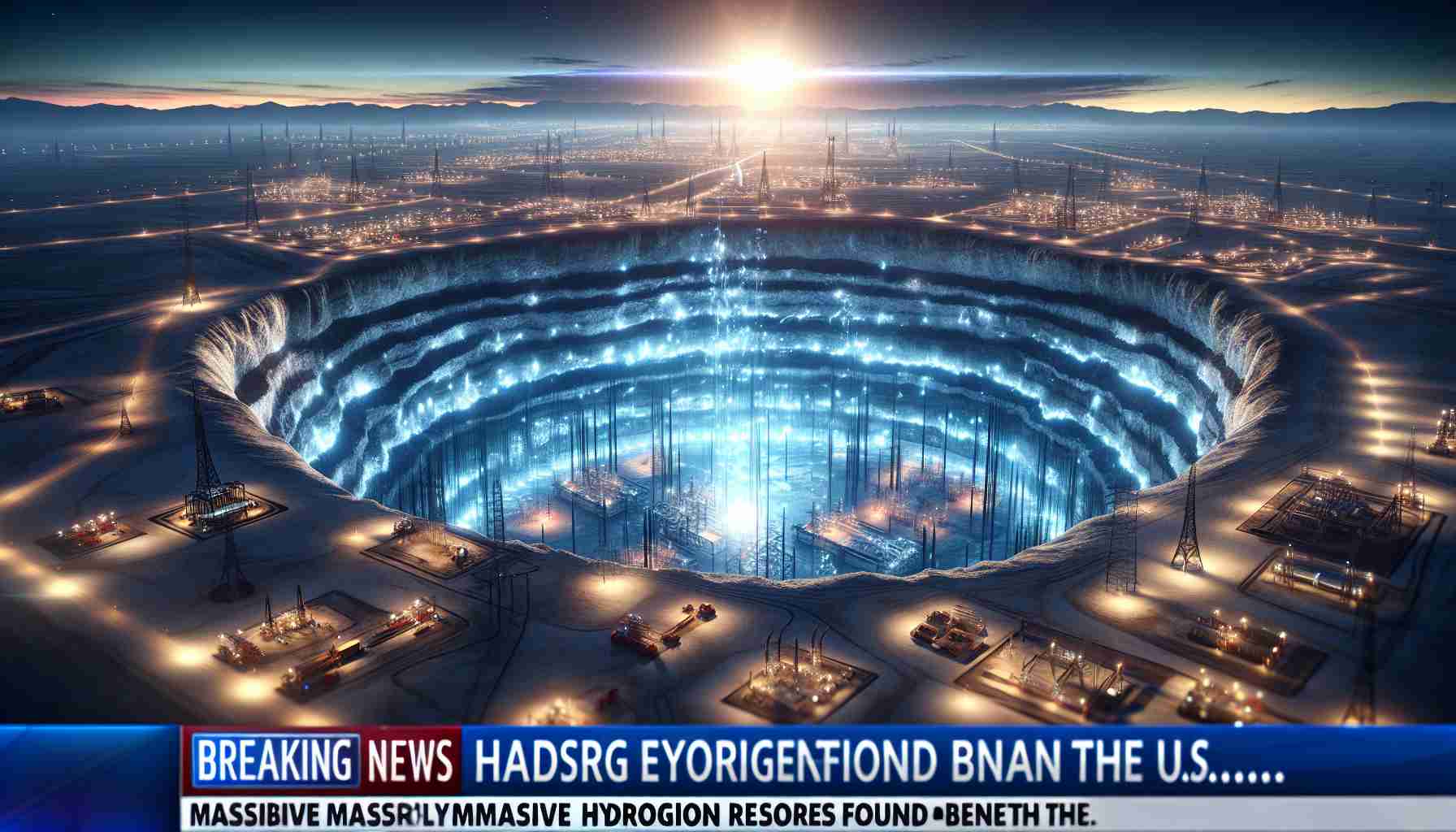A Revolutionary Map Unveils America’s Hydrogen Potential
Innovative research has led to the creation of an unprecedented map that hints at substantial naturally occurring hydrogen reserves lying beneath the United States. This groundbreaking visual representation illustrates regions where hydrogen gas may be present in quantities significant enough to be extracted for energy use, challenging long-held beliefs about this elusive resource.
Experts had long speculated about the existence of more hydrogen in the Earth’s crust than initially understood. The compelling findings revealed that numerous regions across the U.S. might actually host these abundant reserves. Areas of potential, depicted in vibrant shades of blue on the map, encompass large portions of Michigan, eastern Kentucky, and southern North Dakota, alongside parts of Kansas, Colorado, Wyoming, Iowa, and Oklahoma.
The potential for hydrogen accumulation depends on three essential geological factors: the presence of hydrogen sources, suitable reservoir rocks, and effective natural seals to trap the gas underground. The study indicates that at least 30 states possess the geological conditions necessary for hydrogen to form below the surface.
As hydrogen emerges as a key player in the clean energy landscape, projections estimate it could contribute up to 30% of future energy supplies, with demand expected to soar. The research highlights that even a small fraction of the Earth’s estimated 6.2 trillion tons of buried hydrogen could meet global energy needs for the next two centuries, making this discovery not just significant but potentially transformative for energy sustainability going forward.
The Broader Implications of America’s Hydrogen Potential
The unveiling of substantial hydrogen reserves in the United States paves the way for a transformative shift in energy dynamics across both cultural and economic landscapes. As hydrogen emerges as a cornerstone of the clean energy renaissance, its proliferation could catalyze a significant reduction in greenhouse gas emissions. The transition to hydrogen-powered systems is not merely an environmental imperative; it represents a pivotal cultural shift towards sustainability and responsible energy consumption.
The anticipation of 30% contribution to future energy supplies underscores a pivotal moment for the global economy. Hydrogen’s versatility means it could replace fossil fuels in various sectors, including transportation and manufacturing, leading to job creation in new industries focused on hydrogen production and infrastructure development. Furthermore, adopting hydrogen could enhance energy security in a climate often fraught with geopolitical tensions surrounding oil dependence.
In terms of environmental impact, this potential shift from conventional energy sources to hydrogen can significantly lower the carbon footprint, aiding in climate change mitigation. Future trends suggest an increase in public-private partnerships aimed at developing infrastructure for hydrogen distribution, creating opportunities for innovation in renewable energy technologies.
Ultimately, the discovery of these reserves carries profound long-term significance. It not only redefines energy strategies but also challenges societal perceptions of resource utilization, emphasizing the critical importance of adaptation in a rapidly changing world. As hydrogen becomes more mainstream, its integration into everyday life stands to redefine how communities interact with energy, marking the dawn of a cleaner, more sustainable future.
Unlocking a Renewable Future: America’s Untapped Hydrogen Resources
A Revolutionary Map Unveils America’s Hydrogen Potential
Recent research has unveiled a transformative map detailing the vast reserves of naturally occurring hydrogen gas beneath the United States. This innovative visual representation highlights specific regions where hydrogen may be present in significant quantities, providing a fresh perspective on an often-overlooked resource.
Breaking Down the Hydrogen Landscape
Experts believe the Earth’s crust harbors more hydrogen than previously thought, and this new mapping confirms that numerous U.S. states possess substantial reserves. Areas identified include large portions of:
– Michigan
– Eastern Kentucky
– Southern North Dakota
– Kansas
– Colorado
– Wyoming
– Iowa
– Oklahoma
According to the study, these regions appear in vibrant blue shades, indicating the potential for hydrogen accumulation based on geological analysis.
Geological Requirements for Hydrogen Accumulation
The potential for hydrogen reserves is contingent on three key geological factors:
1. Hydrogen Sources: Natural processes must be present to generate hydrogen.
2. Reservoir Rocks: Suitable geological formations are essential for storing gas.
3. Natural Seals: Effective seals are needed to keep the gas trapped underground.
The research suggests that at least 30 states meet the geological criteria necessary for hydrogen formation, making the United States a promising candidate for hydrogen energy production.
The Future of Hydrogen Energy
With hydrogen positioning itself as a cornerstone of clean energy, its role is projected to be crucial with estimates indicating it could satisfy up to 30% of future energy demands. The study underscores that a fraction of the estimated 6.2 trillion tons of hydrogen locked beneath the Earth’s surface might suffice to meet global energy needs for the next two centuries, signaling a transformative shift towards energy sustainability.
Advantages and Challenges of Hydrogen Energy
Pros:
– Clean Energy Source: Hydrogen produces only water when burned, reducing greenhouse gas emissions.
– Abundant Supply: The vast reserves indicated by the map show potential for extensive hydrogen production.
– Supports Renewables: Hydrogen can be generated using excess electricity from renewable sources, providing a storage solution.
Cons:
– Infrastructure Needs: Establishing a hydrogen distribution network is capital intensive.
– Extraction and Purification: Techniques for extracting hydrogen are still developing, which could limit immediate production efforts.
– Environmental Impact: While clean at the point of use, hydrogen production can still have environmental repercussions, depending on the methods employed.
Insights into the Market Potential
The global hydrogen market is predicted to expand considerably as countries seek to decarbonize their energy systems. According to market analysis, industries focused on hydrogen energy technologies, such as fuel cells and electrolyzers, could experience significant growth, driven by government policies and private investments in sustainable energy alternatives.
Conclusion
The unveiling of this hydrogen potential map represents a pivotal moment in harnessing a crucial energy resource. With the right geological conditions spread across numerous states, America is poised to lead in the hydrogen economy revolution. As the world shifts towards sustainable energy practices, the exploration and development of hydrogen resources will play a critical role in shaping our energy future.
For more on sustainable energy trends and innovations, visit energy.gov.
















